Are you struggling to find a workout plan that actually fits your fitness goals? Whether you want to lose weight, build muscle, or simply improve your overall health, choosing the right workout plan is critical to success. With so many options—from running on a treadmill at home to joining one of the many gyms near me—it’s easy to feel overwhelmed. This article will guide you through the process of selecting a workout plan designed to meet your unique fitness objectives, helping you stay motivated and get measurable results.
Understanding Your Fitness Goals
Defining Clear Objectives
Before you start browsing workout routines or signing up at gyms, it’s important to clearly identify what you want to achieve. Fitness goals can broadly fall into categories such as weight loss, muscle gain, endurance improvement, or general health maintenance. Defining specific and realistic goals will help you tailor your workout plan effectively. For example, your goal could be to lose 10 pounds, run a 5K race without stopping, or improve flexibility for better mobility.
Why Setting Goals Matters
Setting clear fitness goals:
- Boosts motivation by giving you something concrete to work toward.
- Helps you measure progress through milestones.
- Ensures you choose exercises and workout styles aligned to your desired outcomes.
Without a goal in mind, it’s easy to lose focus, feel discouraged, or pick plans that don’t work well for your body or lifestyle.
Assessing Your Current Fitness Level
Why It’s Important
Understanding your fitness level helps prevent injury and ensures that your workout plan matches your physical capabilities. If you’re unsure where you stand, simple tests like timing a mile walk or counting how many push-ups you can do give you a starting point.
Tools and Resources
Many gyms provide fitness assessments as part of their membership packages, and some online fitness apps have test features to measure endurance, strength, and flexibility. Even using a treadmill’s built-in programs and data can offer insights into your cardiovascular fitness, helping you adjust workout intensity appropriately.
Explore Workout Plan Types That Match Your Goals
Cardiovascular Training
Cardio workouts such as running, cycling, or treadmill sessions primarily improve heart health and endurance. They’re typically recommended for weight loss and stamina-building goals. Your routine might include 3-5 sessions per week, each lasting 30-60 minutes.
Strength and Resistance Training
Strength training focuses on muscle growth and toning through exercises like weightlifting, resistance bands, or bodyweight workouts. This approach is ideal if your goal is to build muscle or improve overall body composition. Aim for 2-4 sessions per week, allowing rest days between intense workouts.
Flexibility and Mobility Exercises
Activities such as yoga, Pilates, or stretching exercises enhance flexibility and reduce injury risk. Including these in your plan 3-5 days per week complements cardio and strength training effectively.
Factors to Consider When Choosing a Workout Plan
Time Availability and Schedule
Realistically evaluate how much time you can dedicate to workouts each week. A plan that fits your schedule is more sustainable. Even shorter, high-quality workouts like interval training can be powerful when time is limited.
Access to Equipment and Facilities
Decide whether you prefer working out at home, using equipment like a treadmill or dumbbells, or joining one of the gyms near me. Each option has benefits: home workouts offer convenience and privacy, while gyms provide a variety of machines and social motivation.
Personal Preferences and Enjoyment
Choosing activities you enjoy increases the likelihood you’ll stick with your plan long term. This can mean dancing, swimming, hiking, or group classes. Variety also reduces boredom and keeps your routine fresh.
How to Incorporate Equipment Like Treadmills Effectively
Using a Treadmill in Your Workout Plan
The treadmill is a versatile tool suitable for beginners and advanced exercisers alike. Incorporate interval training by mixing walking, jogging, and sprinting to build endurance and burn calories efficiently. Adjust incline settings to add intensity without increasing speed, reducing joint impact.
Setting Personal Challenges
Use the treadmill’s tracking features to set goals such as distance covered or calories burned. These benchmarks can help keep your fitness journey engaging and measurable.
How to Find and Utilize Quality Gyms Near Me
Choosing the Right Gym
Search for gyms near me offering the equipment, classes, and environment that suit your goals and personality. Some may focus more on strength training, while others excel in group cardio or functional fitness.
Maximizing Gym Resources
Take advantage of introductory sessions with personal trainers often included in gym memberships. Trainers can help create or customize workout plans specific to your fitness goals, and show how to safely use equipment or machines.
Creating a Balanced Weekly Workout Schedule
Sample Weekly Plan
A balanced plan typically combines various workout types. Here’s a sample guide:
- Monday: Strength training focusing on upper body
- Tuesday: Cardio session on treadmill or outdoors
- Wednesday: Flexibility exercises like yoga or stretching
- Thursday: Strength training focusing on lower body
- Friday: Interval training on treadmill or cycling
- Saturday: Recreational activity or light movement
- Sunday: Rest or active recovery
Rest and Recovery
Dedicate at least one or two days for rest or low-impact activity to allow your muscles to repair and prevent burnout. Recovery is a crucial component of any fitness routine.
Tracking Your Progress and Adjusting Your Plan
Methods to Track Progress
Tracking provides motivation and insight into what’s working. Use fitness apps, journals, or simple logs to record workouts, weights lifted, distances run on the treadmill, or how you feel after each session.
When and How to Make Adjustments
Reassess your workout plan every 4-6 weeks. If progress stalls or motivation dips, consider tweaking intensity, changing exercises, or trying new activities. This continuous refinement ensures your fitness plan evolves with your body and goals.
Choosing the right workout plan is a vital step on your fitness journey. By understanding your goals, assessing your current capacity, considering your lifestyle, and knowing how to use tools like treadmills or gyms near me, you’ll create a plan that’s motivating and effective. Remember, consistency and enjoyment are key to long-term success. Ready to get started? Explore fitness resources and local gym options today to find the perfect fit for your workout needs.
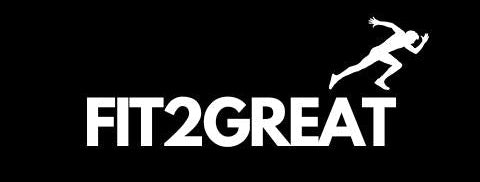
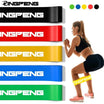

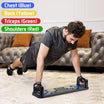







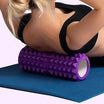




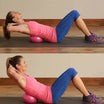
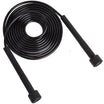
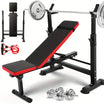
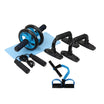



Laat een reactie achter
Alle reacties worden gemodereerd voordat ze worden gepubliceerd.
Deze site wordt beschermd door hCaptcha en het privacybeleid en de servicevoorwaarden van hCaptcha zijn van toepassing.